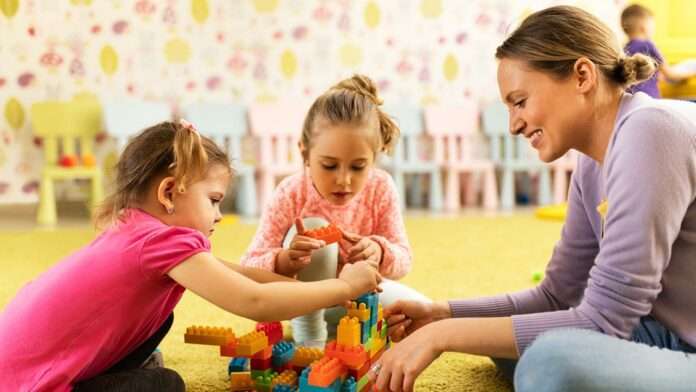K-State child development expert shares tips for parents
MANHATTAN, Kan. – Many adults may be excited to resume “normal” lives as their community’s restrictions due to the COVID-19 pandemic are gradually lifted.
“But for children,” said K-State Research and Extension child development specialist Bradford Wiles, “it’s likely to be a transition unlike any other in our lifetimes.”
Wiles notes that parents that have been working at home for months are gearing up to get back to their workplace. Instead of spending most of their day with their children — or at least in the same house — they will instead spend a large portion of their day away from them.
“When parents start going back to work, their children are going to miss them,” Wiles said. “And there may be some behavioral or emotional issues that go along with that.
“It’s important that we recognize this is another consequence of the pandemic. Just going back to how it was before isn’t really going to help us because children are growing and so they are probably not really thinking about what it was like before the pandemic.”
Wiles encouraged parents to sit and talk with children about the changes to come. He said they should ask the child about their emotions and prepare them for what it will be like when the adults go back to work.
For young children who go to daycare or early childhood education, “try to check in with your children if your job allows you to do so. Maybe you can video chat with them, or maybe it’s a phone call.” Wiles said parents might consider easing children back to daycare, perhaps taking them just three days a week at first.
“Tailoring our transitions to our children’s needs can go a long way in their development,” Wiles said. “Think through when those times will be challenging and try to ease the transition to normal activity.”
“The key with being a parent during this time is exercising as much patience as we can and recognizing that we’re all over-stretched. Even our children are over-stretched. They’re not used to spending this much time in isolation with just their families. That’s going to be a huge transition.”
Children and non-verbal cues
On a recent episode of the weekly radio program, Sound Living, Wiles also talked about the benefits and deficits of the COVID-19 pandemic as it relates to child development.
“The benefits include spending a lot more time with our family members and siblings,” he said.
But the deficits have also been extreme, he added, “particularly for children who are going to school but also need to wear masks and keep an appropriate distance from their peers. Those of us who study child development know that those things can be particularly difficult for children and how they learn about relating to other people.”
From the standpoint of safety, masks are necessary, Wiles said, but he added that it prevents children from picking up on important non-verbal cues that aid in development.
“For example, they can’t see if a person they’re talking to is smiling or frowning or has a confused look,” Wiles said.
“As children are growing, it can be really important to see how other people are responding to them, and then respond appropriately. Wearing a face covering can really interfere with how we decipher other people’s reactions. For children who are younger and starting to learn speech and mimic other people’s speech, if they can’t see other people’s mouths, that can be very difficult.”
Face masks have also prevented some from being able to accurately interpret such non-verbal cues as sarcasm and jokes and playful interactions. “What happens when we’re covering our faces is we are just not able to read each other,” Wiles said.
“I don’t want anyone to think I’m not advocating for mask use. I just want people to know there are consequences beyond the inconvenience of the mask.”
More information on child development is available online from K-State Research and Extension.
FOR PRINT PUBLICATIONS: Links used in this story
Sound Living, www.ksre.k-state.edu/news/radio-network/sound-living.html
Applied Research in Child Health and Enhancing Resilience, www.hhs.k-state.edu/ahs/extension/child-development
K State Research and Extension is a short name for the Kansas State University Agricultural Experiment Station and Cooperative Extension Service, a program designed to generate and distribute useful knowledge for the well being of Kansans. Supported by county, state, federal and private funds, the program has county extension offices, experiment fields, area extension offices and regional research centers statewide. Its headquarters is on the K State campus in Manhattan. For more information, visit www.ksre.ksu.edu
For more information:
Bradford B. Wiles
bwiles@ksu.edu
785-532-1939
Written by:
Pat Melgares
785-532-1160
melgares@ksu.edu





